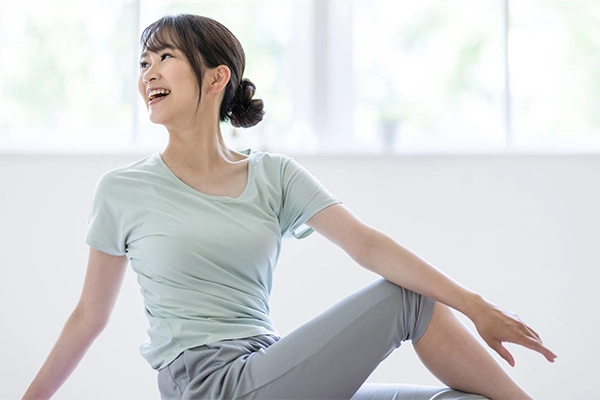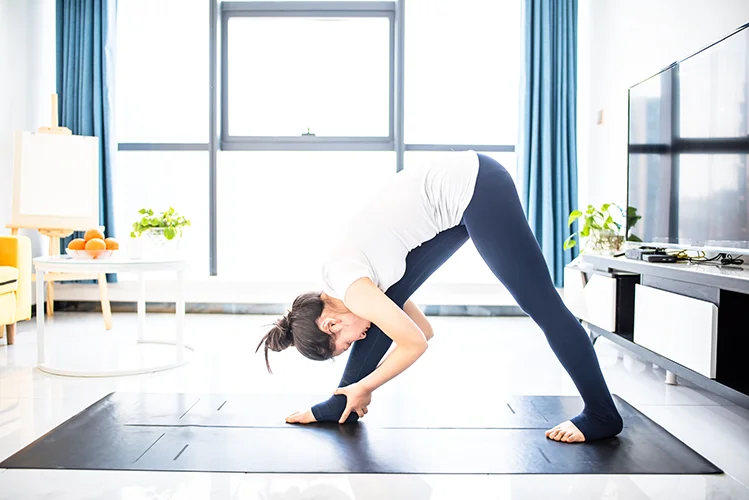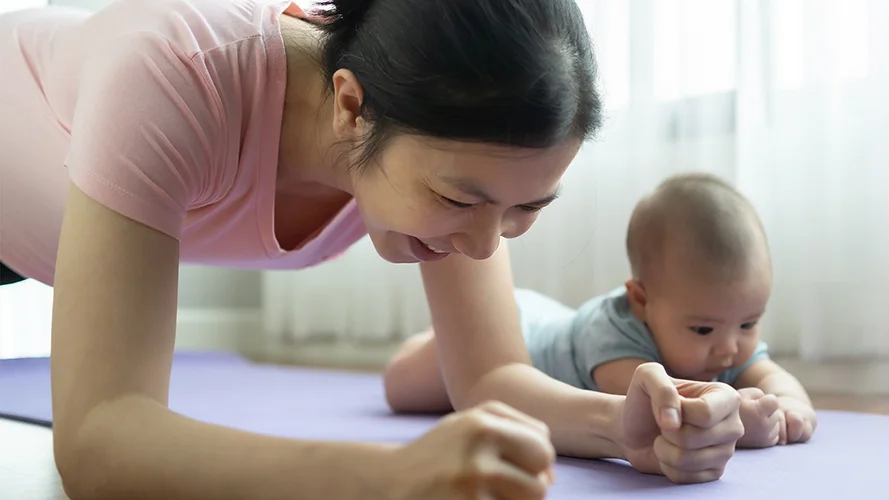Topics
产后期
怀孕期间,女性的身体结构和荷尔蒙都会发生深刻的变化。产后期是紧接分娩后的时期。
产后期通常被认为是分娩后的前六周,其特点是随着女性的身体从怀孕中恢复而进行身体调整。
在此期间,女性可能会出现阴道疼痛、阴道分泌物(恶露)、乳房肿胀、子宫收缩等症状,以及焦虑感和产后忧郁等情绪挑战。
产后锻炼的益处
女性的身体在怀孕期间经历了显着的变化,以适应不断增长的胎儿。
产后锻炼有助于母亲身体的恢复和愈合,特别是加强和调理腹部肌肉、增加能量、防止尿失禁、促进怀孕期间增加的体重减轻、缓解压力,并促进睡眠中断的新妈妈更好地睡眠。
产后锻炼指南
在分娩后开始任何产后锻炼之前,请务必咨询您的医疗保健提供者。分娩后开始锻炼的时间因分娩类型、个人的康复和医生的建议而异。
在剖腹产(一项主要手术)之后,建议先等待大约六到八周再进行锻炼。然而,我们鼓励您每天步行。
在正常分娩缝合后,妈妈应该能够在感觉准备好后立即恢复锻炼。建议进行低冲击和温和的锻炼,如步行、骨盆底锻炼和温和的拉伸运动。
随着时间的推移逐渐增加锻炼强度,并倾听自己身体的声音,如果感到任何疼痛或不适,请停止锻炼。
5种可考虑的产后锻炼
进行产后锻炼可以帮助母亲重建体力、增强肌肉、改善整体健康状况。
| 类型 | 详细信息 |
| 1. 产后盆底肌锻炼 | 盆底肌肉为女性膀胱提供支持,防止其下垂(脱垂)。此外,它们有助于控制膀胱和肠道功能,防止尿液或粪便泄漏。 盆底肌锻炼或凯格尔锻炼的重点是加强骨盆底肌肉,以防止失禁,加强阴道肌肉,并防止意外排便。 要进行骨盆底锻炼:
|
| 2. 快乐婴儿姿势 | 要进行快乐婴儿姿势:
|
| 3. 产后腹部锻炼 | 骨盆倾斜锻炼有助于加强腹部肌肉,因为腹部肌肉在分娩过程中会被拉伸和削弱。要进行骨盆倾斜锻炼:
|
| 4. 腹直肌分离的产后锻炼 | 腹直肌分离是当两块腹直肌分开异常宽的距离时发生的一种情况。 脚趾踢踏锻炼可以帮助激活横肌和腹直肌,以支持分娩后的核心力量。要进行脚趾踢踏锻炼:
脚跟滑动可以帮助增强核心稳定性,同时减轻腹直肌的压力。进行脚跟滑动:
|
| 5. 产后健身运动 | 当您感觉准备好时,特别是在自然分娩后,便可开始外出进行低冲击运动,如步行。您可以在几天到几周内开始,具体取决于您的分娩和恢复情况。 步行可以改善血液循环、情绪和耐力,帮助您重建力量、活力,增强整体健康。 |
开始产后锻炼时应考虑的提示
为了实现产后锻炼的最佳效果,请从步行和盆底肌锻炼等轻柔的锻炼开始,同时可在准备好后进行轻微的拉伸。确保不要把自己逼得太紧。
让您的身体产后有时间愈合。在开始产后锻炼之前,您的身体需要更多的时间来恢复。从低冲击运动开始,如散步、游泳、深呼吸、普拉提和瑜伽。
避免高强度运动和举起重物,以避免增加骨骼损伤、伤口愈合延迟、骨盆底功能障碍、脱垂和腹直肌分离的风险。
如果您在进行锻炼时感到任何疼痛和不适,请停止锻炼并咨询您的医生。最重要的是,要有耐心,让身体痊愈。
在产后锻炼之前、期间和之后多喝水,以补充水分,获得充足的休息和睡眠,以获得最佳的产后恢复。









